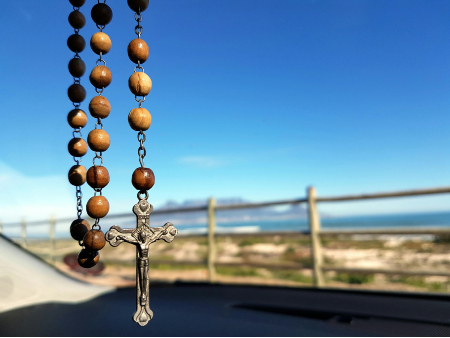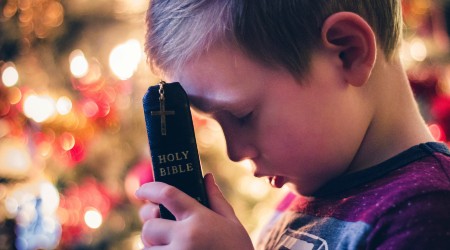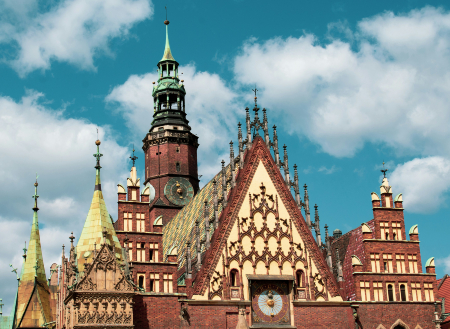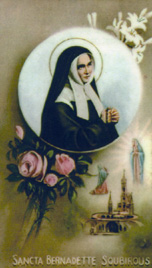 Hi readers, it seems you use Catholic Online a lot; that's great! It's a little awkward to ask, but we need your help. If you have already donated, we sincerely thank you. We're not salespeople, but we depend on donations averaging $14.76 and fewer than 1% of readers give. If you donate just $5.00, the price of your coffee, Catholic Online School could keep thriving. Thank you. Help Now >
Hi readers, it seems you use Catholic Online a lot; that's great! It's a little awkward to ask, but we need your help. If you have already donated, we sincerely thank you. We're not salespeople, but we depend on donations averaging $14.76 and fewer than 1% of readers give. If you donate just $5.00, the price of your coffee, Catholic Online School could keep thriving. Thank you. Help Now >
To Love the Liturgy is to Love the Lord and Live on the Horizon Where Heaven Touches Earth
FREE Catholic Classes
If the figure of Christ does not emerge from the liturgy, it is not a
Christian liturgy. As Blessed John Paul II wrote, "the mystery of the
Eucharist is 'too great a gift' to admit of ambiguities or reductions,
above all when, 'stripped of its sacrificial meaning, it is celebrated
as if it were simply a fraternal banquet'. Worship
cannot come from our imagination: that would be a cry in the darkness
or mere self-affirmation. True liturgy supposes that God responds and
shows us how we can adore Him. The Church lives in His presence - and
its reason for being and existing is to expand His presence in the
world.- Pope Emeritus Benedict XVI
Highlights
Catholic Online (https://www.catholic.org)
1/25/2014 (1 decade ago)
Published in U.S.
Keywords: Holy Mass, Liturgy, Divine Liturgy, Holy Sacrifice of the Mass, Roman Missal, worship, icons, sacrament, Catholic renewal, Pope Benedict XVI, Deacon Keith Fournier
CHESAPEAKE,VA (Catholic Online) - My friend Deal Hudson has been writing some excellent pieces on Catholics and Culture. In his most recent installment he touches the subject of Beauty and the Liturgy. This is a topic of great interest to me.
I am what is sometimes called a revert to the Catholic Church. I never officially left, but my practice of the faith grew cold, in fact non-existent, when my family stopped practicing when I was a child. In my youthful search for the meaning of life I was drawn back to living faith in Jesus Christ and drawn home to the fullness of Christianity, the Catholic faith.
It was a circuitous journey which involved a teenage encounter with the Risen Lord, a serious hunger for prayer and bible study, ecclesial experiment and finding the early Church fathers. I questioned my way all the way back home to the faith of my childhood.
However, it was rediscovering worship in the beauty of the Divine Liturgy, the Holy Mass - and the mystery which it makes present - which became the light for so much of my journey home. That light continues to illuminate my path because Beauty is, as Deal so eloquently reminds us, so very attractive for a reason.God is the source.
After all these years, the Divine Liturgy, the Holy Mass, is still the rich and fertile ground of my life of faith and my multi-faceted apostolate. I have as a Deacon for seventeen years. Serving at the Altar, where heaven touches earth and earth touches heaven, roots me in the heart of the Church.
There is a Latin maxim that addresses the centrality of worship in the life, identity and mission of the Church; Lex Orandi, Lex Credendi. The phrase in Latin literally means the law of prayer (the way we worship), and the law of belief (what we believe). It is sometimes written as, Lex Orandi, Lex Credendi, Lex Vivendi, further deepening the implications of this truth.
How we worship reflects what we believe and determines how we will live.
Worship is the beating heart of the Christian vocation. The highest form of Worship is the Divine Liturgy or, as we say in the Latin Rite of the Catholic Church, the Holy Mass.
The Catholic Church has long understood that part of her role as mother and teacher is to watch over worship, for the sake of the faithful and in obedience to the God whom she serves. How we worship not only reveals and guards what we believe but guides us in how we live our Christian faith and fulfill our Christian mission in the world.
We ask you, humbly: don't scroll away.
Hi readers, it seems you use Catholic Online a lot; that's great! It's a little awkward to ask, but we need your help. If you have already donated, we sincerely thank you. We're not salespeople, but we depend on donations averaging $14.76 and fewer than 1% of readers give. If you donate just $5.00, the price of your coffee, Catholic Online School could keep thriving. Thank you.Help Now >
Liturgical Worship is not an add on for a Catholic Christian. It is the foundation of Catholic identity; expressing our highest purpose.Worship reveals what we truly believe and how we view ourselves in relationship to God, one another and the world into which we are sent to carry forward the redemptive mission of Jesus Christ.
How the Church worships is a prophetic witness to the truth of what she professes. Good worship becomes a dynamic means of drawing the entire human community into the fullness of life in Jesus Christ. It attracts - through beauty to Beauty. Worship informs and transforms both the person and the faith community which participates in it. There is a certain reciprocity between worship and life.
I have spent decades in ecumenical work. Perhaps that explains why I find it odd that right when so many of our Christian friends in other confessions and communities are searching for a deeper encounter with the beauty of the Lord in formal liturgical worship, many Catholics so easily succumbed to novelties.
Our fellow Christians everywhere are hungering for sign, symbol and mystery in worship. As many children of the Protestant Reformation are considering the safe harbor of the Catholic Church in order to experience a connection with the ancient Church, too many Catholics have lost their sense of what it really means to be a Catholic Christian, including the beauty of Catholic worship.
As many Christians in the communities of the Protestant reformation are suffering from the sad loss of what CS Lewis called Mere Christianity, too many Catholics have little grasp of the treasure they have in the ancient but ever new Catholic faith.
As our Christian brethren are experiencing the barrenness of their own worship, many in our Catholic Church are discarding the very treasures that make her formal liturgical worship so beautiful, full of mystery and so compelling and attractive to those seeking a deeper experience of worship and Christian life.
Sadly, what for some may have begun as a sincere effort to simplify the Liturgy in the Catholic Church too often devolved into a form of liturgical minimalism. The liturgical minimalism I speak of begins when you entered what was often called the worship space of some contemporary church buildings.
There are few symbols of the ancient yet ever new Catholic faith in many portions of the vineyard. That is sad. There are few icons or images reflecting heaven touching earth, drawing the worshipper into a transcendent encounter with the God who we receive in the Most Holy Eucharist and in whom we are invited to live and move and have our being.
I am not a traditionalist Catholic, although I understand and respect those who are. I am just a Christian who chooses to live my faith in its fullness, as a Catholic. I love the Tradition, with a capital T. I returned to the Catholic Church as a young man after a sincere journey to find the Lord which led me to the early fathers of the Church and back home to Rome as they say.
I was drawn back to that fullness of Christianity that is dynamic, orthodox, faithful Catholic life and practice. I have respect for my brethren who are Protestants in each of their various confessions and communities. I have worked for decades with many of these my fellow Christians. I pray with them and stand in solidarity with them, rooted in our common Baptism, in so many of the efforts to which I have dedicated much of my work.
However, I am not a protestant Christian one, by choice. I am a Catholic Christian by choice. If I were not raised a Catholic I would have become one. I do not want a Protestant looking church building or a stripped down Catholicism whose worship seems more protestant than Catholic. I also do not want barren liturgy and symbol-less Catholicism.
Over the last few decades, some who purported to be liturgical experts too often stripped away the richness and the depth that draws so many to the treasure that is Catholic worship and life. Their numbers and influence are dwindling.
The Catholic seminaries that are full (and their number is increasing) are filled with candidates who want the vibrant, symbolic, faithful, richly liturgical, devout fullness of Catholic faith and life. The movement toward dynamic, symbolic and beautiful Liturgy is not about going backward but going forward and toward the eternal worship.
The ecclesial movements are flourishing in the Church, drawing men and women who also want the fullness of Catholic worship, faith and life in all of its rich beauty. The new Catholics, coming into full communion from other Christian communities, are flocking to the dynamically orthodox and faithful Catholic parishes. The symbols are coming back into our sanctuaries and new ones are emerging.
It is all happening because of the young. The move toward recovering the sense of the Sacred in the Liturgy is a youth movement in the Church. The future of the Church is Tradition, rightly understood. The liturgical innovators are aging and their reign is coming to an end.
There was a movement called Iconoclasm ("Image-breaking") in the eighth and ninth centuries in the Eastern Church. It became a full scale heresy. The term has come to be associated with those who rejected icons, but it speaks to a contemporary problem, liturgical minimalism and the loss of the sense of the Sacred in our Churches.
Icons are meant to put us in touch with the transcendent mysteries of our faith. I pray with icons and have for many years. I cherish their liturgical role in the Eastern Church. In fact, one would never find an Eastern Church, Catholic or Orthodox, without icons. The contemporary iconoclasts are those who seek to de-mystify Christian faith, life, worship and practice. They are not the future of the Catholic Church but the past.
There are still some who think that the symbols of our Catholic worship, faith and life are a problem. When they stripped our sanctuaries and made our liturgical experiences barren, they thought they were helping us by somehow making the faith more 'relevant", "meaningful" or "contemporary". They were sadly mistaken and have done the Church and her mission a disservice.
It is the Church which makes human experience more relevant, by revealing its full meaning and mystery. The Liturgy helps to bring heaven to earth and earth to heaven. They also failed to grasp that, by nature and grace, human persons are symbolic. Man (and woman) is created in the image of God, and is a divine icon.
Jesus Christ is the Icon of the Father. Symbols touch us at a much deeper level than words or emotive or affective participation can. They touch us at the level where authentic religion and deep worship truly begins. It is there where we hunger the most for God.
Pope Emeritus Benedict XVI is one of the great liturgists of our age. His seminal book, The Spirit of the Liturgy, written when he was still Joseph Cardinal Ratzinger, is required reading in most seminaries and should be read by every Catholic. In the last year of his service, before this humble, holy man voluntarily stepped aside and dedicated the rest of his days to a monastic vocation, he gave a beautiful series of instructions on the Liturgy.
On October 3, 2012, he reminded the pilgrims in St Peters square: It is not the individual - priest or layman - or the group that celebrates the liturgy, but it is primarily God's action through the Church, which has its own history, its rich tradition and creativity. This universality and fundamental openness, which is characteristic of the entire liturgy is one of the reasons why it cannot be created or amended by the individual community or by experts, but must be faithful to the forms of the universal Church.
Dear friends, the Church is made visible in many ways: in its charitable work, in mission projects, in the personal apostolate that every Christian must realize in his or her own environment. But the place where it is fully experienced as a Church is in the liturgy: it is the act in which we believe that God enters into our reality and we can meet Him, we can touch Him. It is the act in which we come into contact with God, He comes to us, and we are enlightened by Him.
So when in the reflections on the liturgy we concentrate all our attention on how to make it attractive, interesting and beautiful, we risk forgetting the essential: the liturgy is celebrated for God and not for ourselves, it is His work, He is the subject, and we must open ourselves to Him and be guided by Him and His Body which is the Church.
The older I get the more I appreciate the profound gift and mystery that is the Eucharistic Liturgy, the Holy Sacrifice of the Mass. I understand the immense amount of time and catechesis spent in preparing the faithful for the implementation of the last Revisions to the Roman Missal.
It has borne such good fruit. As one who has spent many years studying Catholic theology, I welcomed the revisions and I saw them as a kind but motherly act by the Church to set the ship on a straight course and raise the water level of all Catholic worship. The faithful deserve it.
It was deeply distressing to me that some priests actually took it upon themselves to change the canon and the liturgical prayers of the Holy Mass. The Holy Mass does not belong to the celebrating priest; it belongs to Christ the High Priest in whom he stands..
I am not opposed to spontaneity in its proper form and proper place. Just not in the canon of the Sacred Liturgy, the Holy Mass. The faithful have a Right to receive the Liturgy as Holy Mother Church has preserved it under the continual inspiration of the Holy Spirit.
On April 15, 2010, then Pope Benedict XVI addressed the Bishops of Brazil in Rome. He told them that the Eucharist constitutes the center and permanent source of the Petrine ministry, the heart of the Christian life, source and summit of the Church's mission of evangelization. You can thus understand the concern of the Successor of Peter for all that can obfuscate this most essential point of the Catholic faith: that today, Jesus Christ continues alive and truly present in the consecrated host and the chalice.
We ask you, humbly: don't scroll away.
Hi readers, it seems you use Catholic Online a lot; that's great! It's a little awkward to ask, but we need your help. If you have already donated, we sincerely thank you. We're not salespeople, but we depend on donations averaging $14.76 and fewer than 1% of readers give. If you donate just $5.00, the price of your coffee, Catholic Online School could keep thriving. Thank you.Help Now >
He warned the Bishops that Paying less attention at times to the rite of the Most Holy Sacrament constitutes a sign and a cause of the darkening of the Christian sense of mystery, such as when Jesus is not the centre of the Mass, but rather a community preoccupied with other things instead of being taken up and drawn to the only one necessary: their Lord.
Pope Benedict continued, If the figure of Christ does not emerge from the liturgy, it is not a Christian liturgy. As Blessed John Paul II wrote, "the mystery of the Eucharist is 'too great a gift' to admit of ambiguities or reductions, above all when, 'stripped of its sacrificial meaning, it is celebrated as if it were simply a fraternal banquet'.
Toward the end of those beautiful remarks now Pope Emeritus Benedict summarized the heart of Liturgy, Worship cannot come from our imagination: that would be a cry in the darkness or mere self-affirmation. True liturgy supposes that God responds and shows us how we can adore Him. The Church lives in His presence - and its reason for being and existing is to expand His presence in the world.
To love the Liturgy is to love the Lord and live on the horizon where heaven touches earth.
---
'Help Give every Student and Teacher FREE resources for a world-class Moral Catholic Education'
Copyright 2021 - Distributed by Catholic Online












 Daily Readings for Tuesday, April 16, 2024
Daily Readings for Tuesday, April 16, 2024 St. Bernadette: Saint of the Day for Tuesday, April 16, 2024
St. Bernadette: Saint of the Day for Tuesday, April 16, 2024 Prayer for our Family #1: Prayer of the Day for Tuesday, April 16, 2024
Prayer for our Family #1: Prayer of the Day for Tuesday, April 16, 2024


